Psychology and human development. Lecture 44

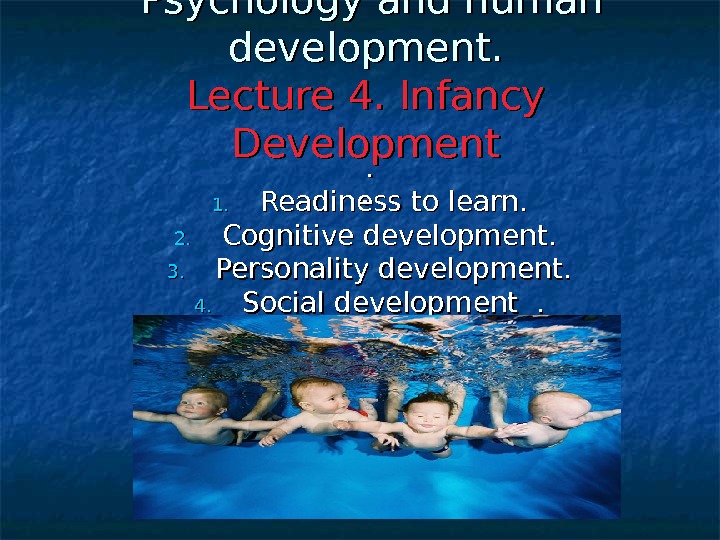

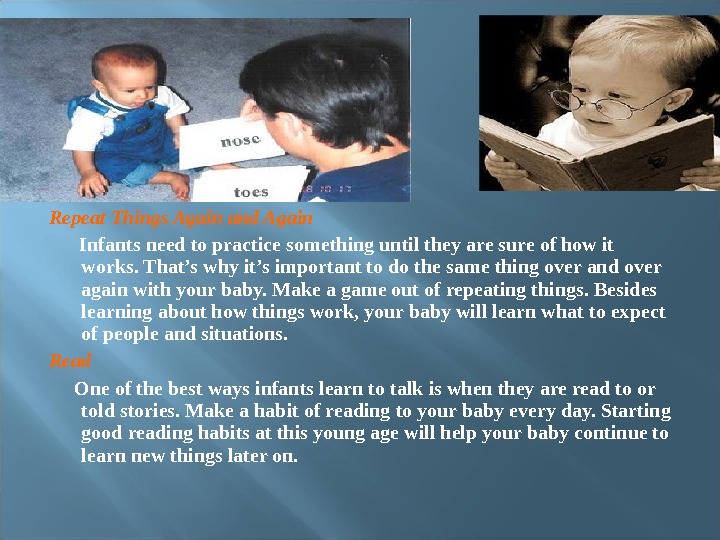

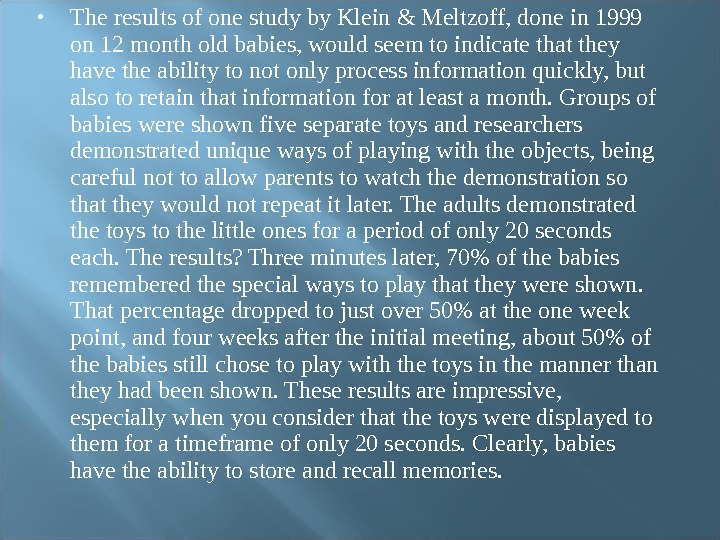
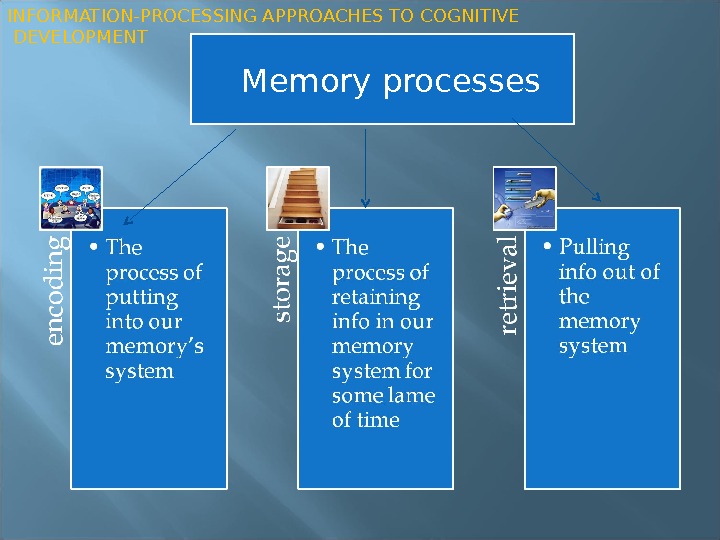
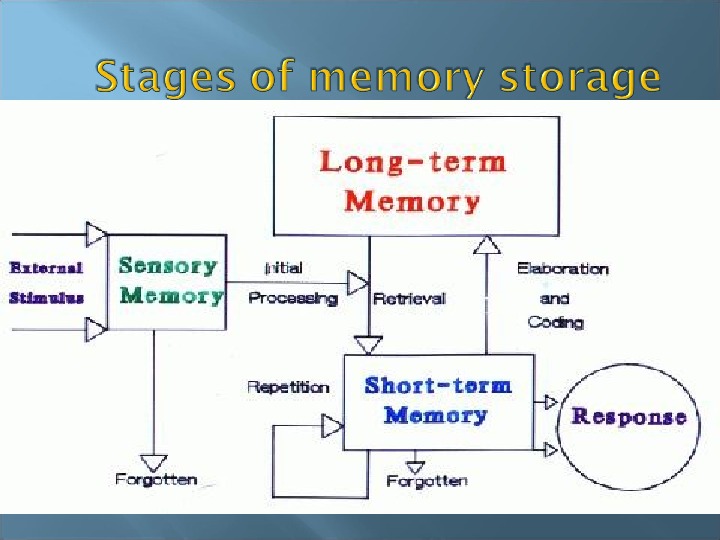
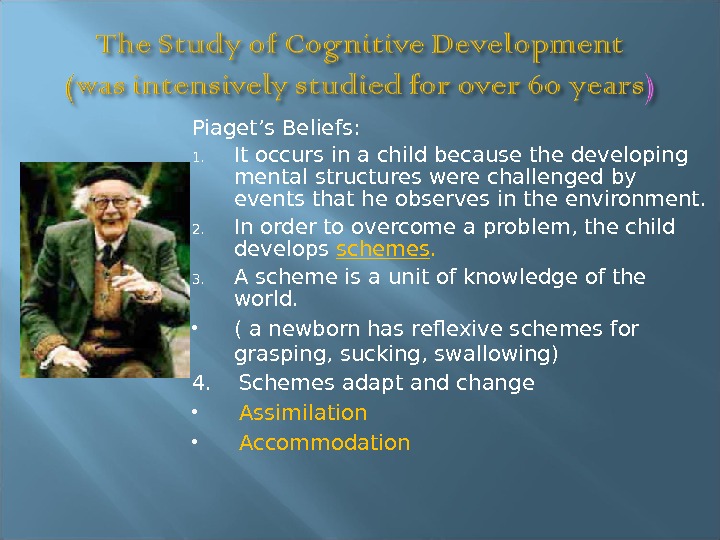
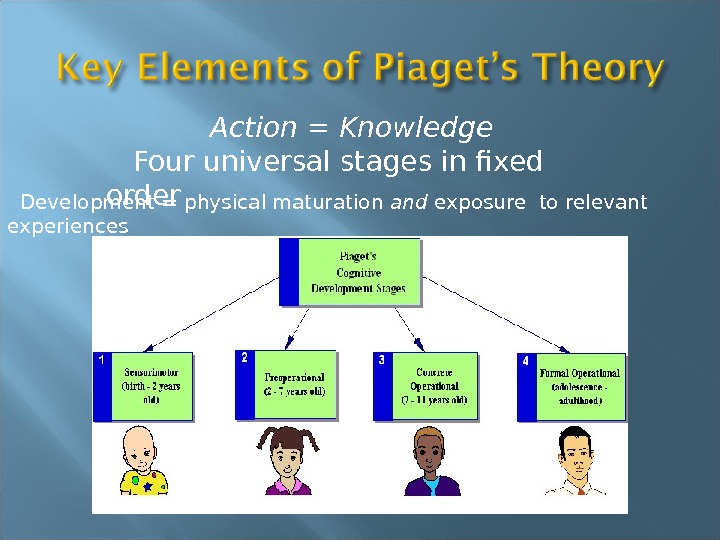

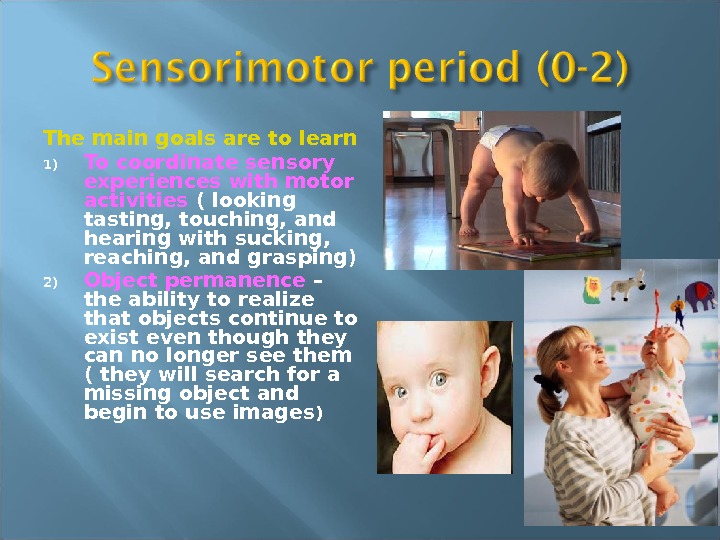
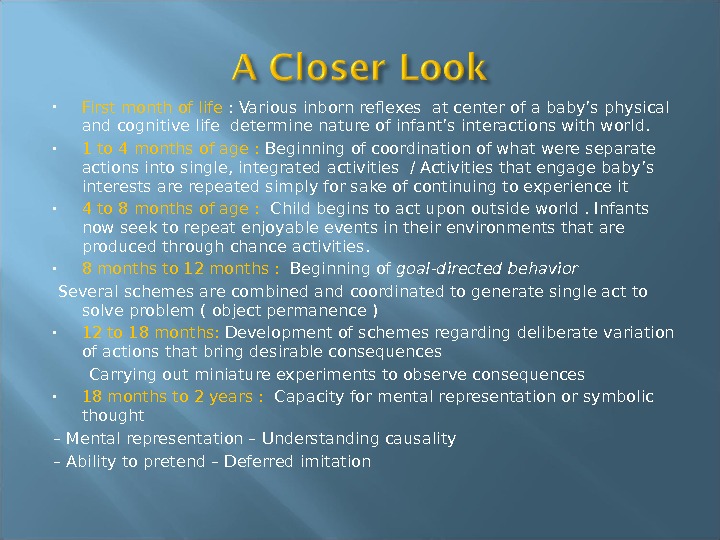
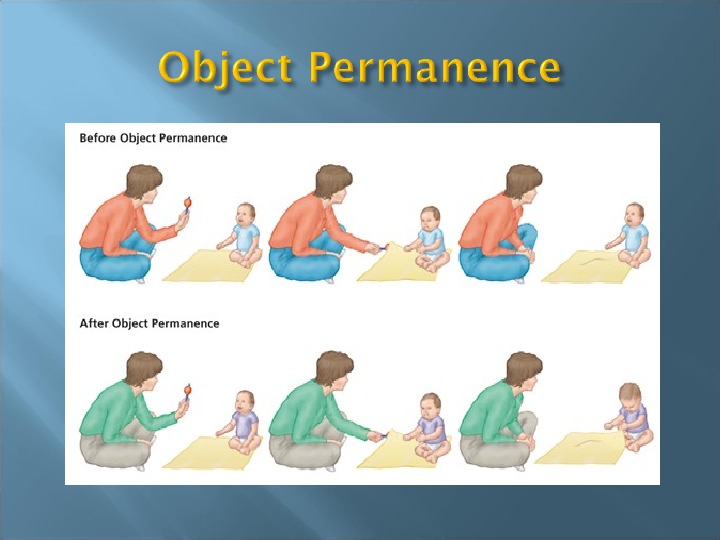

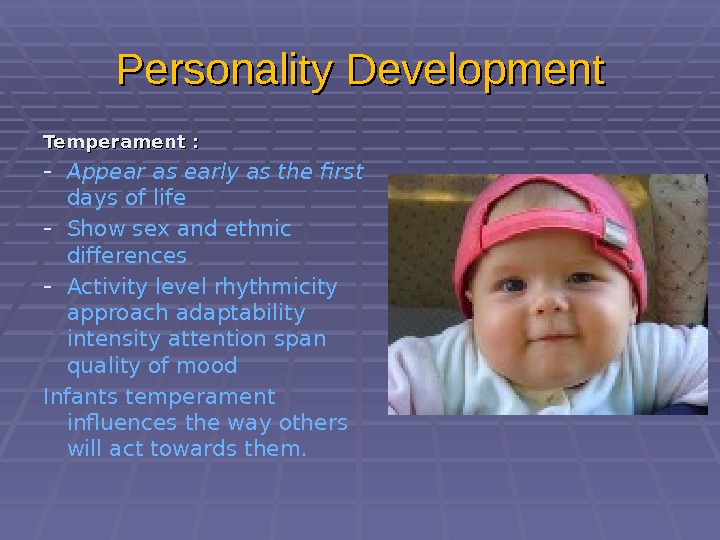
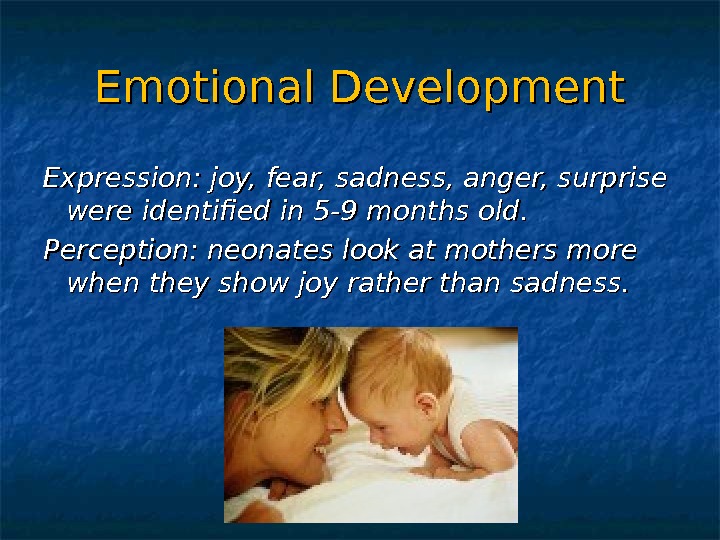
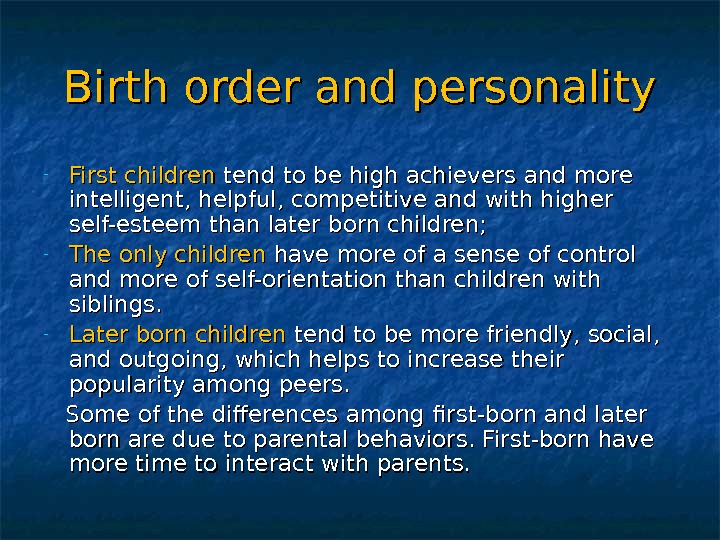

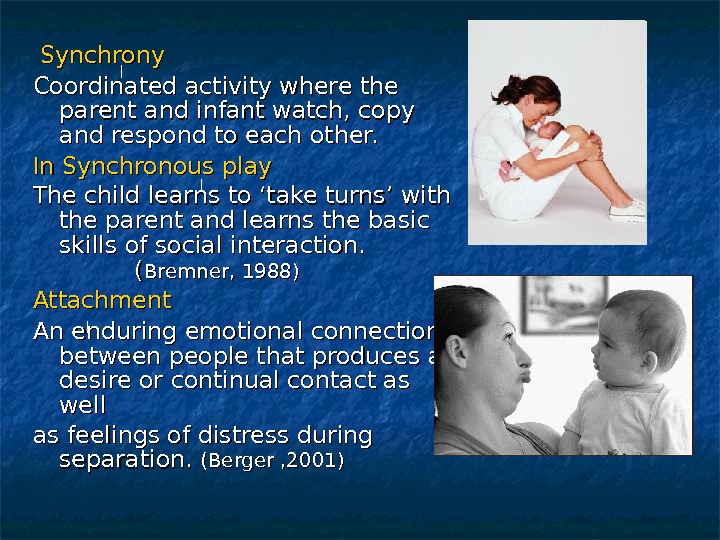
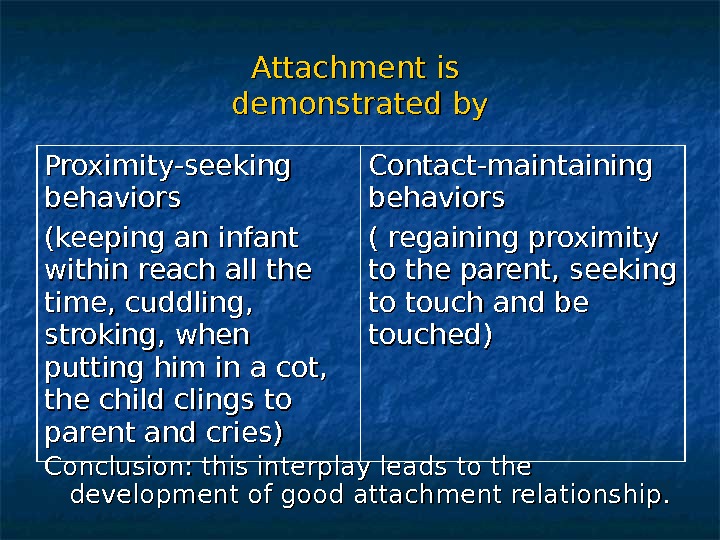
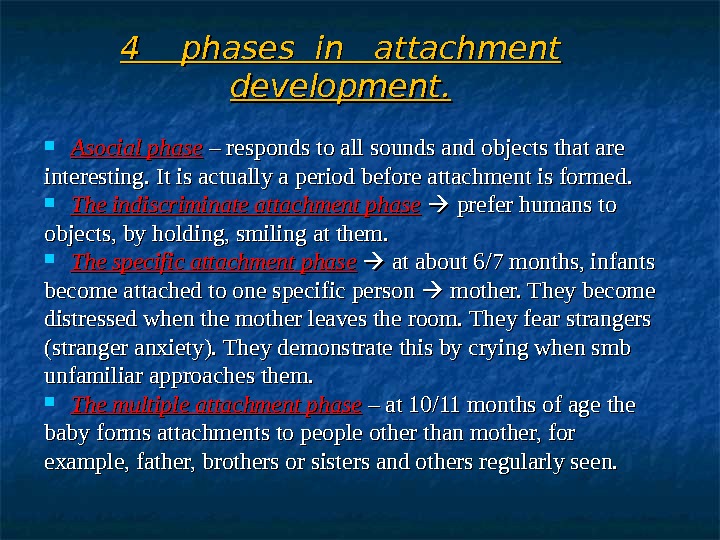
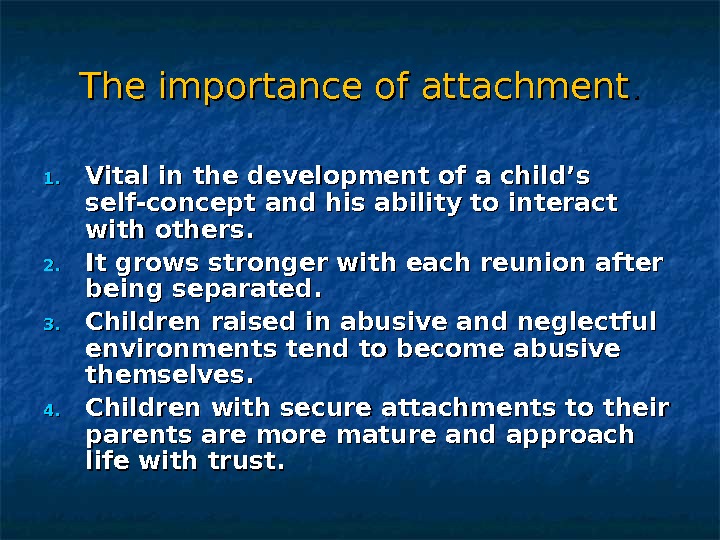
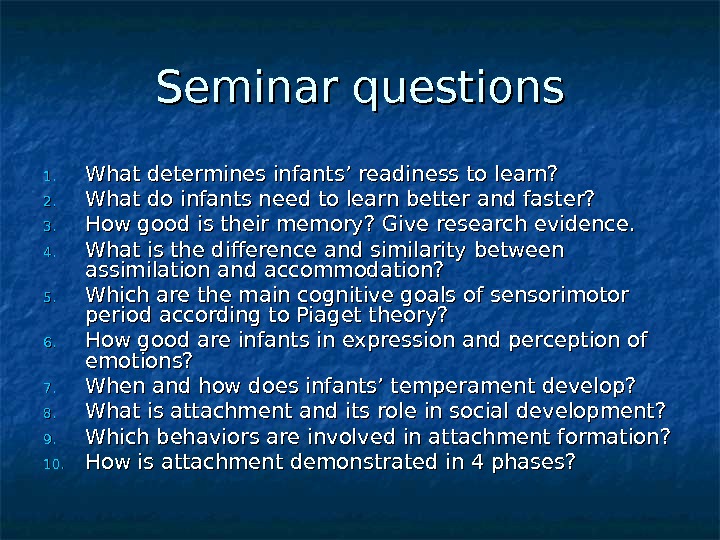
- Размер: 5.1 Mегабайта
- Количество слайдов: 23
Описание презентации Psychology and human development. Lecture 44 по слайдам
 Psychology and human development. Lecture 44. Infancy Development. . . . 1. 1. Readiness to learn. 2. 2. Cognitive development. 3. 3. Personality development. 4. 4. Social development . Attachment.
Psychology and human development. Lecture 44. Infancy Development. . . . 1. 1. Readiness to learn. 2. 2. Cognitive development. 3. 3. Personality development. 4. 4. Social development . Attachment.
 Readiness to learn Babies cannot learn until their muscles and neural structures are developed enough. Physical and mental maturation determines the readiness to learn. Example: for toilet training, the muscles and the brain must be mature enough to learn to control their sphincter muscles (app. 2 years old) Critical periods are periods of time during which particular behaviors should be ideally learned (for humans: attachment and language acquisition)
Readiness to learn Babies cannot learn until their muscles and neural structures are developed enough. Physical and mental maturation determines the readiness to learn. Example: for toilet training, the muscles and the brain must be mature enough to learn to control their sphincter muscles (app. 2 years old) Critical periods are periods of time during which particular behaviors should be ideally learned (for humans: attachment and language acquisition)
 Repeat Things Again and Again Infants need to practice something until they are sure of how it works. That’s why it’s important to do the same thing over and over again with your baby. Make a game out of repeating things. Besides learning about how things work, your baby will learn what to expect of people and situations. Read One of the best ways infants learn to talk is when they are read to or told stories. Make a habit of reading to your baby every day. Starting good reading habits at this young age will help your baby continue to learn new things later on.
Repeat Things Again and Again Infants need to practice something until they are sure of how it works. That’s why it’s important to do the same thing over and over again with your baby. Make a game out of repeating things. Besides learning about how things work, your baby will learn what to expect of people and situations. Read One of the best ways infants learn to talk is when they are read to or told stories. Make a habit of reading to your baby every day. Starting good reading habits at this young age will help your baby continue to learn new things later on.
 Years ago child development experts believed that babies didn’t know a whole lot and what they did understand wasn’t retained for very long. These days professionals in the child development arena will attest to what parents have suspected all along — that babies are able to understand retain considerable information and that their memory capacity increases dramatically with age and maturity. In most cases memories of personal experiences in infancy do not last into adulthood Memories of personal experience seem not to become accurate before age 18 to 24 months
Years ago child development experts believed that babies didn’t know a whole lot and what they did understand wasn’t retained for very long. These days professionals in the child development arena will attest to what parents have suspected all along — that babies are able to understand retain considerable information and that their memory capacity increases dramatically with age and maturity. In most cases memories of personal experiences in infancy do not last into adulthood Memories of personal experience seem not to become accurate before age 18 to 24 months
 The results of one study by Klein & Meltzoff, done in 1999 on 12 month old babies, would seem to indicate that they have the ability to not only process information quickly, but also to retain that information for at least a month. Groups of babies were shown five separate toys and researchers demonstrated unique ways of playing with the objects, being careful not to allow parents to watch the demonstration so that they would not repeat it later. The adults demonstrated the toys to the little ones for a period of only 20 seconds each. The results? Three minutes later, 70% of the babies remembered the special ways to play that they were shown. That percentage dropped to just over 50% at the one week point, and four weeks after the initial meeting, about 50% of the babies still chose to play with the toys in the manner than they had been shown. These results are impressive, especially when you consider that the toys were displayed to them for a timeframe of only 20 seconds. Clearly, babies have the ability to store and recall memories.
The results of one study by Klein & Meltzoff, done in 1999 on 12 month old babies, would seem to indicate that they have the ability to not only process information quickly, but also to retain that information for at least a month. Groups of babies were shown five separate toys and researchers demonstrated unique ways of playing with the objects, being careful not to allow parents to watch the demonstration so that they would not repeat it later. The adults demonstrated the toys to the little ones for a period of only 20 seconds each. The results? Three minutes later, 70% of the babies remembered the special ways to play that they were shown. That percentage dropped to just over 50% at the one week point, and four weeks after the initial meeting, about 50% of the babies still chose to play with the toys in the manner than they had been shown. These results are impressive, especially when you consider that the toys were displayed to them for a timeframe of only 20 seconds. Clearly, babies have the ability to store and recall memories.
 Memory processes. INFORMATION-PROCESSING APPROACHES TO COGNITIVE DEVELOPMENT
Memory processes. INFORMATION-PROCESSING APPROACHES TO COGNITIVE DEVELOPMENT

 Piaget’s Beliefs: 1. It occurs in a child because the developing mental structures were challenged by events that he observes in the environment. 2. In order to overcome a problem, the child develops schemes. 3. A scheme is a unit of knowledge of the world. ( a newborn has reflexive schemes for grasping, sucking, swallowing) 4. Schemes adapt and change Assimilation Accommodation
Piaget’s Beliefs: 1. It occurs in a child because the developing mental structures were challenged by events that he observes in the environment. 2. In order to overcome a problem, the child develops schemes. 3. A scheme is a unit of knowledge of the world. ( a newborn has reflexive schemes for grasping, sucking, swallowing) 4. Schemes adapt and change Assimilation Accommodation
 Action = Knowledge Four universal stages in fixed order Development = physical maturation and exposure to relevant experiences
Action = Knowledge Four universal stages in fixed order Development = physical maturation and exposure to relevant experiences
 Assimilation : the process by which the child integrates new stimulus events into already existing schemes. ( a new breed of dog into the existing scheme of dog). Accommodation : the process of creating a new scheme or changing an existing scheme to make room for a new stimulus event or experience (accommodates a cat by creating the new scheme of cat)
Assimilation : the process by which the child integrates new stimulus events into already existing schemes. ( a new breed of dog into the existing scheme of dog). Accommodation : the process of creating a new scheme or changing an existing scheme to make room for a new stimulus event or experience (accommodates a cat by creating the new scheme of cat)
 The main goals are to learn 1) To coordinate sensory experiences with motor activities ( looking tasting, touching, and hearing with sucking, reaching, and grasping) 2) Object permanence – the ability to realize that objects continue to exist even though they can no longer see them ( they will search for a missing object and begin to use images )
The main goals are to learn 1) To coordinate sensory experiences with motor activities ( looking tasting, touching, and hearing with sucking, reaching, and grasping) 2) Object permanence – the ability to realize that objects continue to exist even though they can no longer see them ( they will search for a missing object and begin to use images )
 First month of life : Various inborn reflexes at center of a baby’s physical and cognitive life determine nature of infant’s interactions with world. 1 to 4 months of age : Beginning of coordination of what were separate actions into single, integrated activities / Activities that engage baby’s interests are repeated simply for sake of continuing to experience it 4 to 8 months of age : Child begins to act upon outside world. Infants now seek to repeat enjoyable events in their environments that are produced through chance activities. 8 months to 12 months : Beginning of goal-directed behavior Several schemes are combined and coordinated to generate single act to solve problem ( object permanence ) 12 to 18 months: Development of schemes regarding deliberate variation of actions that bring desirable consequences Carrying out miniature experiments to observe consequences 18 months to 2 years : Capacity for mental representation or symbolic thought – Mental representation – Understanding causality – Ability to pretend – Deferred imitation
First month of life : Various inborn reflexes at center of a baby’s physical and cognitive life determine nature of infant’s interactions with world. 1 to 4 months of age : Beginning of coordination of what were separate actions into single, integrated activities / Activities that engage baby’s interests are repeated simply for sake of continuing to experience it 4 to 8 months of age : Child begins to act upon outside world. Infants now seek to repeat enjoyable events in their environments that are produced through chance activities. 8 months to 12 months : Beginning of goal-directed behavior Several schemes are combined and coordinated to generate single act to solve problem ( object permanence ) 12 to 18 months: Development of schemes regarding deliberate variation of actions that bring desirable consequences Carrying out miniature experiments to observe consequences 18 months to 2 years : Capacity for mental representation or symbolic thought – Mental representation – Understanding causality – Ability to pretend – Deferred imitation


 Personality Development Temperament : — Appear as early as the first days of life — Show sex and ethnic differences — Activity level rhythmicity approach adaptability intensity attention span quality of mood Infants temperament influences the way others will act towards them.
Personality Development Temperament : — Appear as early as the first days of life — Show sex and ethnic differences — Activity level rhythmicity approach adaptability intensity attention span quality of mood Infants temperament influences the way others will act towards them.
 Emotional Development Expression: joy, fear, sadness, anger, surprise were identified in 5 -9 months old. Perception: neonates look at mothers more when they show joy rather than sadness.
Emotional Development Expression: joy, fear, sadness, anger, surprise were identified in 5 -9 months old. Perception: neonates look at mothers more when they show joy rather than sadness.
 Birth order and personality — First children tend to be high achievers and more intelligent, helpful, competitive and with higher self-esteem than later born children; — The only children have more of a sense of control and more of self-orientation than children with siblings. — Later born children tend to be more friendly, social, and outgoing, which helps to increase their popularity among peers. Some of the differences among first-born and later born are due to parental behaviors. First-born have more time to interact with parents.
Birth order and personality — First children tend to be high achievers and more intelligent, helpful, competitive and with higher self-esteem than later born children; — The only children have more of a sense of control and more of self-orientation than children with siblings. — Later born children tend to be more friendly, social, and outgoing, which helps to increase their popularity among peers. Some of the differences among first-born and later born are due to parental behaviors. First-born have more time to interact with parents.
 SOCIAL DEVELOPMENT Synchrony and Attachment -Everyone has a NEED to feel an emotional connection to other people. — An infant is unable to communicate verbally (warmth? security? comfort? food? drink? ), so parents have to decipher the infant’s facial expressions and sounds. — By spending time watching and playing with a baby, parents develop understanding of their moods and needs — They become engaged in developing synchrony.
SOCIAL DEVELOPMENT Synchrony and Attachment -Everyone has a NEED to feel an emotional connection to other people. — An infant is unable to communicate verbally (warmth? security? comfort? food? drink? ), so parents have to decipher the infant’s facial expressions and sounds. — By spending time watching and playing with a baby, parents develop understanding of their moods and needs — They become engaged in developing synchrony.
 Synchrony Coordinated activity where the parent and infant watch, copy and respond to each other. In Synchronous play The child learns to ‘take turns’ with the parent and learns the basic skills of social interaction. ( Bremner, 1988) Attachment An enduring emotional connection between people that produces a desire or continual contact as well as feelings of distress during separation. (Berger , 2001)
Synchrony Coordinated activity where the parent and infant watch, copy and respond to each other. In Synchronous play The child learns to ‘take turns’ with the parent and learns the basic skills of social interaction. ( Bremner, 1988) Attachment An enduring emotional connection between people that produces a desire or continual contact as well as feelings of distress during separation. (Berger , 2001)
 Attachment is demonstrated by Conclusion: this interplay leads to the development of good attachment relationship. Proximity-seeking behaviors (keeping an infant within reach all the time, cuddling, stroking, when putting him in a cot, the child clings to parent and cries) Contact-maintaining behaviors ( regaining proximity to the parent, seeking to touch and be touched)
Attachment is demonstrated by Conclusion: this interplay leads to the development of good attachment relationship. Proximity-seeking behaviors (keeping an infant within reach all the time, cuddling, stroking, when putting him in a cot, the child clings to parent and cries) Contact-maintaining behaviors ( regaining proximity to the parent, seeking to touch and be touched)
 4 phases in attachment development. Asocial phase – responds to all sounds and objects that are interesting. It is actually a period before attachment is formed. The indiscriminate attachment phase prefer humans to objects, by holding, smiling at them. The specific attachment phase at about 6/7 months, infants become attached to one specific person mother. They become distressed when the mother leaves the room. They fear strangers (stranger anxiety). They demonstrate this by crying when smb unfamiliar approaches them. The multiple attachment phase – at 10/11 months of age the baby forms attachments to people other than mother, for example, father, brothers or sisters and others regularly seen.
4 phases in attachment development. Asocial phase – responds to all sounds and objects that are interesting. It is actually a period before attachment is formed. The indiscriminate attachment phase prefer humans to objects, by holding, smiling at them. The specific attachment phase at about 6/7 months, infants become attached to one specific person mother. They become distressed when the mother leaves the room. They fear strangers (stranger anxiety). They demonstrate this by crying when smb unfamiliar approaches them. The multiple attachment phase – at 10/11 months of age the baby forms attachments to people other than mother, for example, father, brothers or sisters and others regularly seen.
 The importance of attachment. . 1. 1. Vital in the development of a child’s self-concept and his ability to interact with others. 2. 2. It grows stronger with each reunion after being separated. 3. 3. Children raised in abusive and neglectful environments tend to become abusive themselves. 4. 4. Children with secure attachments to their parents are more mature and approach life with trust.
The importance of attachment. . 1. 1. Vital in the development of a child’s self-concept and his ability to interact with others. 2. 2. It grows stronger with each reunion after being separated. 3. 3. Children raised in abusive and neglectful environments tend to become abusive themselves. 4. 4. Children with secure attachments to their parents are more mature and approach life with trust.
 Seminar questions 1. 1. What determines infants’ readiness to learn? 2. 2. What do infants need to learn better and faster? 3. 3. How good is their memory? Give research evidence. 4. 4. What is the difference and similarity between assimilation and accommodation? 5. 5. Which are the main cognitive goals of sensorimotor period according to Piaget theory? 6. 6. How good are infants in expression and perception of emotions? 7. 7. When and how does infants’ temperament develop? 8. 8. What is attachment and its role in social development? 9. 9. Which behaviors are involved in attachment formation? 10. How is attachment demonstrated in 4 phases?
Seminar questions 1. 1. What determines infants’ readiness to learn? 2. 2. What do infants need to learn better and faster? 3. 3. How good is their memory? Give research evidence. 4. 4. What is the difference and similarity between assimilation and accommodation? 5. 5. Which are the main cognitive goals of sensorimotor period according to Piaget theory? 6. 6. How good are infants in expression and perception of emotions? 7. 7. When and how does infants’ temperament develop? 8. 8. What is attachment and its role in social development? 9. 9. Which behaviors are involved in attachment formation? 10. How is attachment demonstrated in 4 phases?

